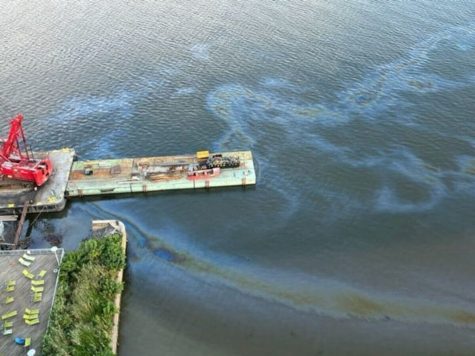Delaware River Spill: The Big Picture
April 25, 2023
 From March 24 to March 26, latex polymer chemicals flowed from a ruptured pipe into a storm drain, eventually making its way into the Delaware River. The Delaware supplies drinking water for over 15 million people in the Northeast region, including Bucks County.
From March 24 to March 26, latex polymer chemicals flowed from a ruptured pipe into a storm drain, eventually making its way into the Delaware River. The Delaware supplies drinking water for over 15 million people in the Northeast region, including Bucks County.
Over 8,100 gallons of chemicals were leaked, including ethyl acrylate, methyl methacrylate, and butyl acrylate, the last of which was also spilled in the Ohio train derailment. These chemicals are not only difficult to pronounce, but also can cause health effects such as irritation in the skin, eye, and nose; nausea; headaches; shortness of breath, and pulmonary edema. Not fun.
The Pennsylvania Department of Environmental Protection found that rain helped clear up the fumes, luckily for us, and that no chemicals were found in the nearby Baxter water treatment plant. This means the threat has passed and we don’t need to worry any longer about not using tap water.
However, the problem does not stop at this tiny spill. Since 2017, over 4.4 million pounds of toxic waste has been leaked into the Delaware. This data does not include 2022 or 2023. While this seems impossible–the Delaware is a protected body of water by the Clean Water Act and Safe Drinking Water Act–this pollution is entirely within legal standards. Also, these polluting companies are located downstream of most of our drinking water intakes.

Yet there are tens of other factories and chemical plants lining the Delaware that are not forced to report their pollution levels, or choose not to. The real number of toxic pollution could be much higher.
So, is this recent latex spill just part of the bigger pattern? It appears so, based on the hundreds of thousands of pounds of chemicals dumped into the Delaware each year. It may not have immediate effects on drinking water, but in the long run, it’s unlikely this practice is sustainable.
Granted, we have come a long way from the 1970’s, when so much waste was in the Delaware that oxygen levels in the river–a key factor for its biosphere–reached near zero. Since then, environmental protection has really ramped up. But based on this recent spill and the data of spills in recent years, we’ve still got a ways to go.